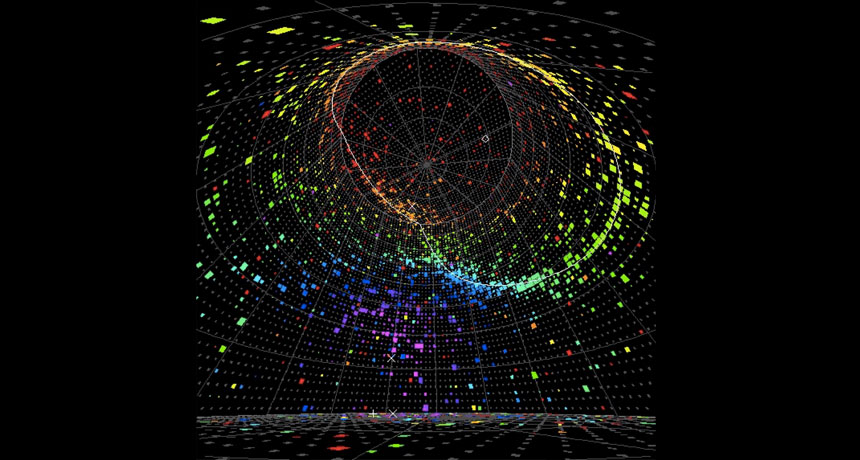Neutrino experiment may hint at why matter rules the universe

A new study hints that neutrinos might behave differently than their antimatter counterparts. The result amplifies scientists’ suspicions that the lightweight elementary particles could help explain why the universe has much more matter than antimatter.
In the Big Bang, 13.8 billion years ago, matter and antimatter were created in equal amounts. To tip that balance to the universe’s current, matter-dominated state, matter and antimatter must behave differently, a concept known as CP, or “charge parity,” violation.
In neutrinos, which come in three types — electron, muon and tau — CP violation can be measured by observing how neutrinos oscillate, or change from one type to another. Researchers with the T2K experiment found that muon neutrinos morphed into electron neutrinos more often than expected, while muon antineutrinos became electron antineutrinos less often. That suggests that the neutrinos were violating CP, the researchers concluded August 4 at a colloquium at the High Energy Accelerator Research Organization, KEK, in Tsukuba, Japan.
T2K scientists had previously presented a weaker hint of CP violation. The new result is based on about twice as much data, but the evidence is still not definitive. In physicist parlance, it is a “two sigma” measurement, an indicator of how statistically strong the evidence is. Physicists usually require five sigma to claim a discovery.
Even three sigma is still far away — T2K could reach that milestone by 2026. A future experiment, DUNE, now under construction at the Sanford Underground Research Laboratory in Lead, S.D., may reach five sigma. It is worth being patient, says physicist Chang Kee Jung of Stony Brook University in New York, who is a member of the T2K collaboration. “We are dealing with really profound problems.”